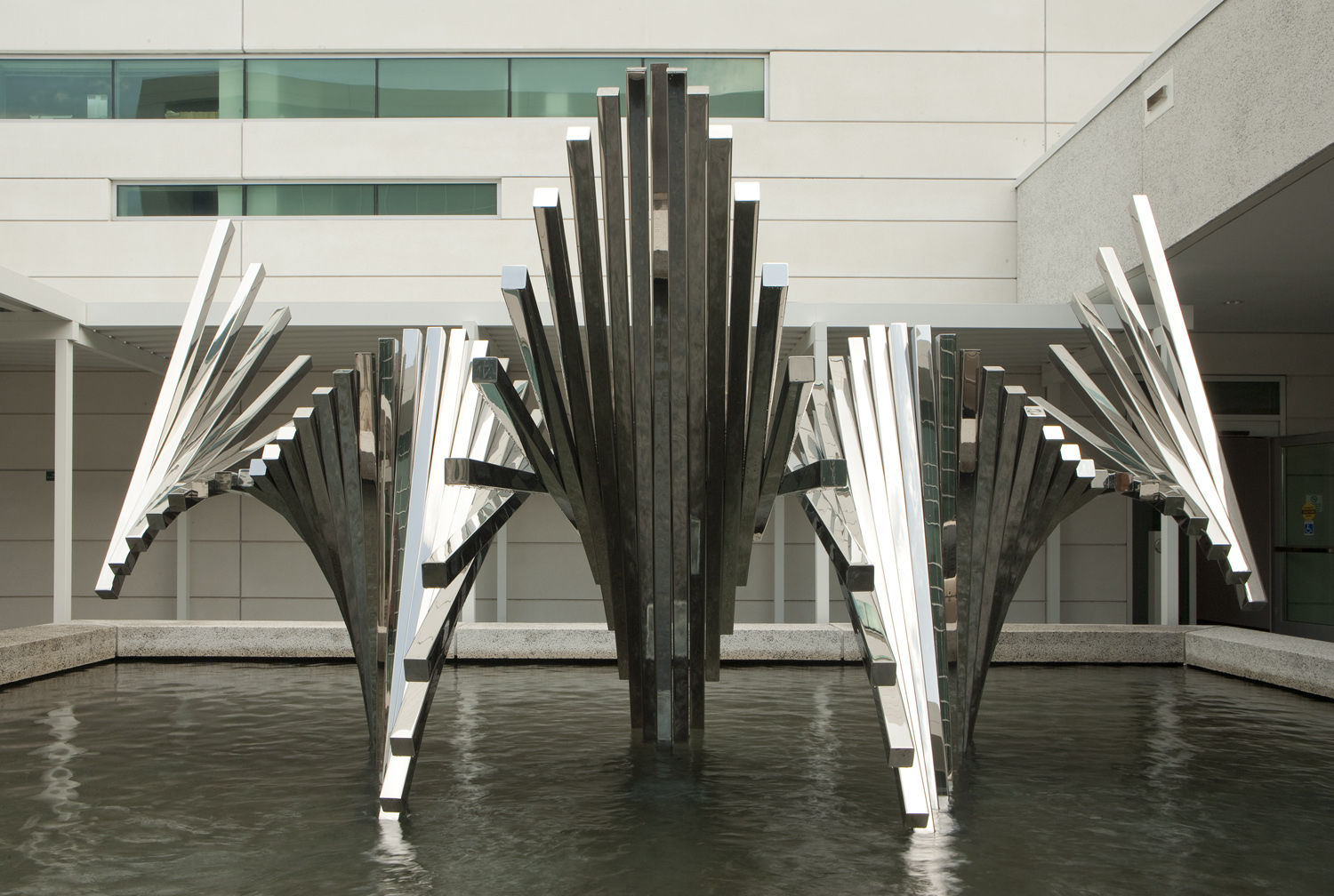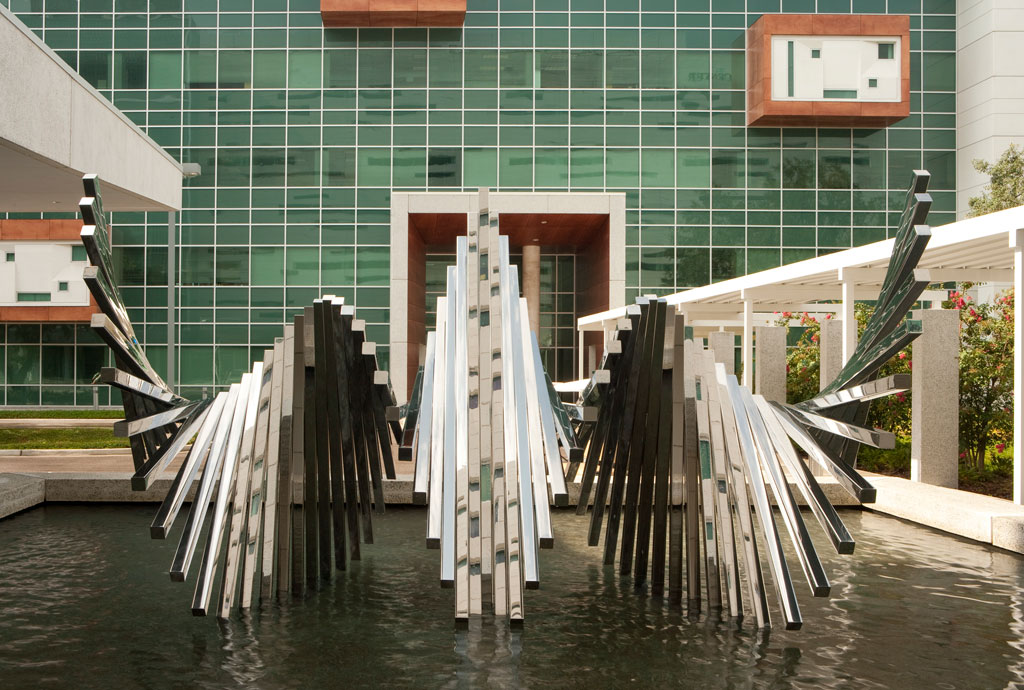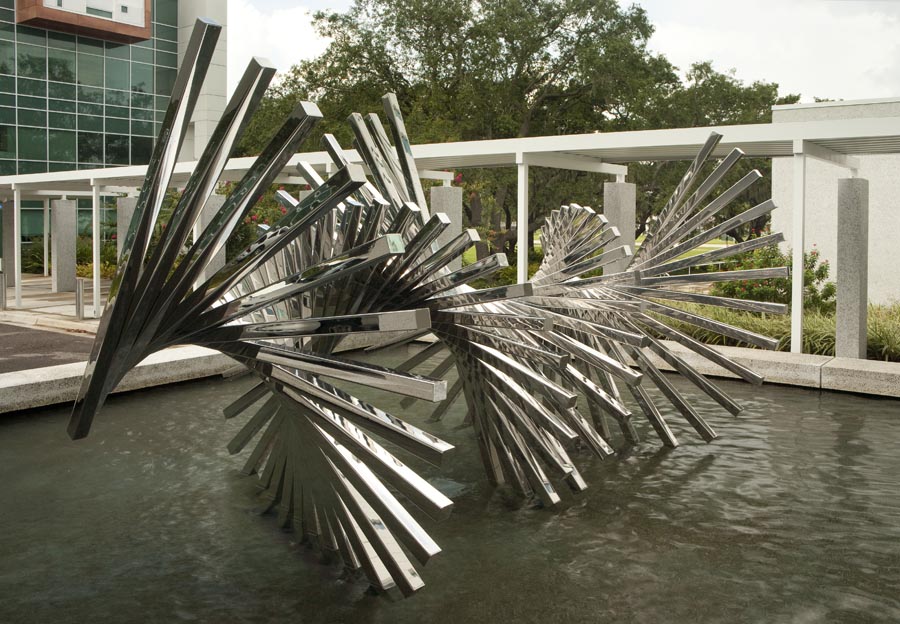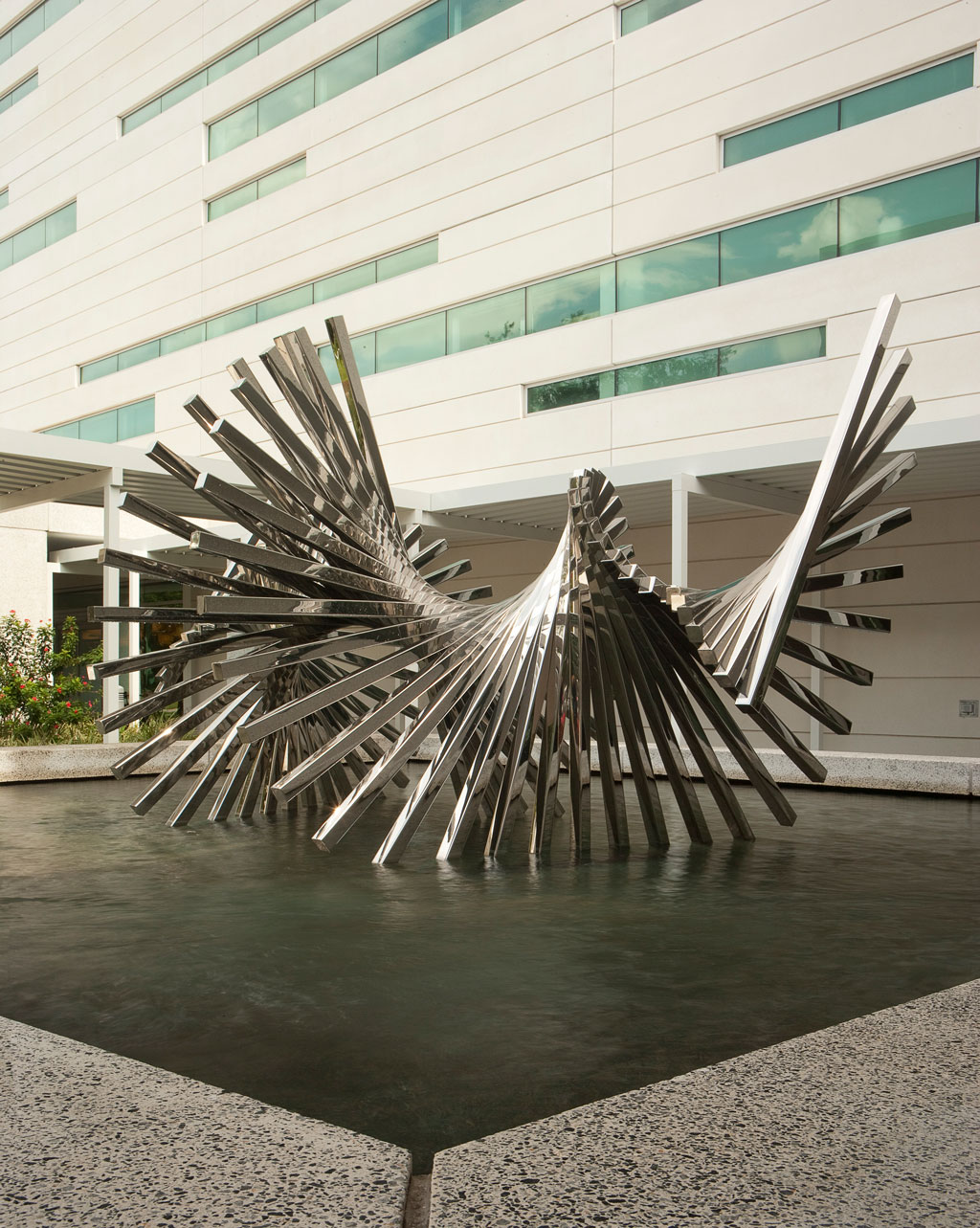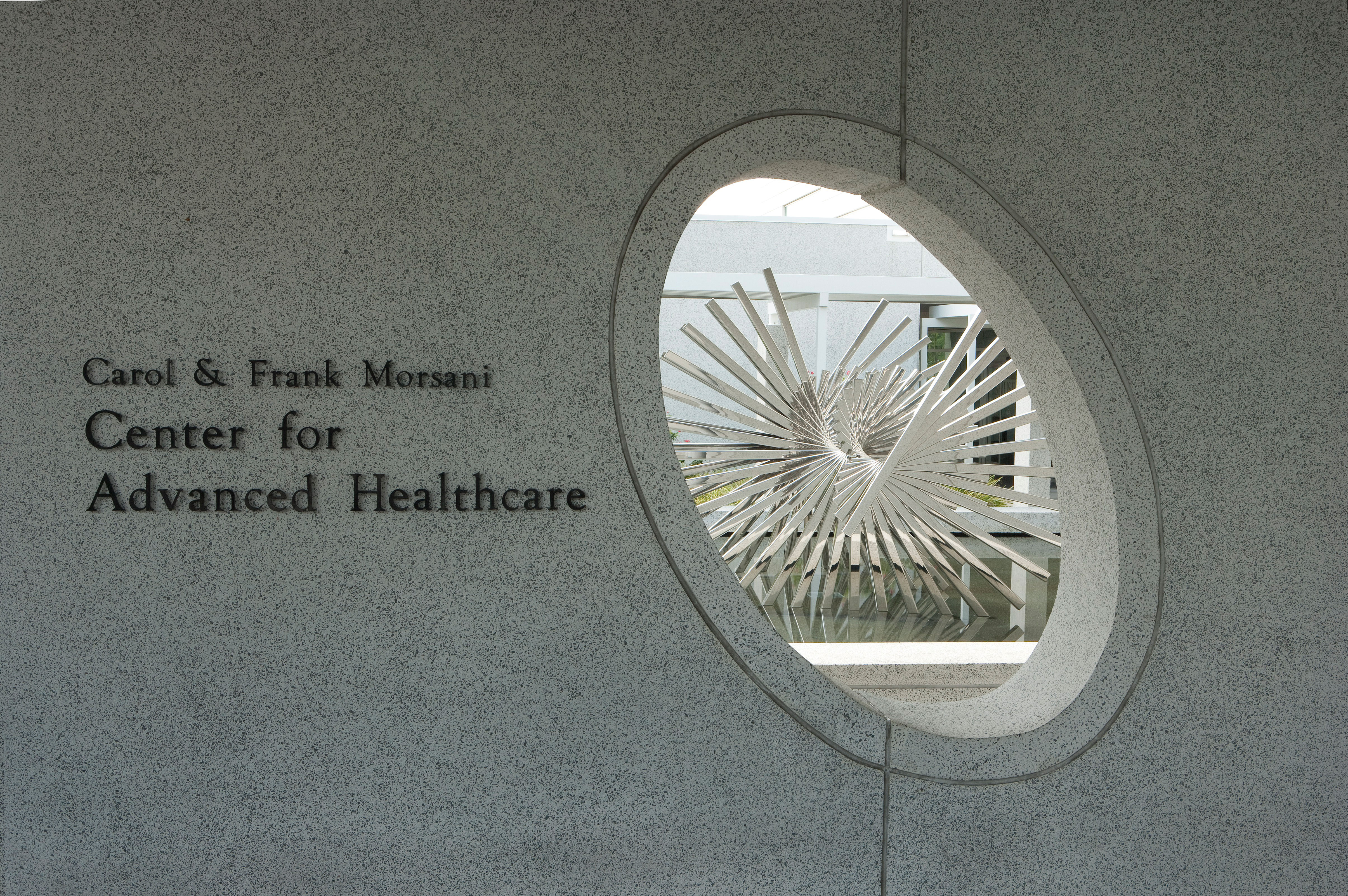Alyson Shotz
Double Rotation,
2011
PROJECT DESCRIPTION:
Double Rotation by Alyson Shotz was commissioned with funds provided by Florida’s Art in State Buildings program, which has been supporting public art since 1979.
The program allots a portion of construction appropriations for artwork to be permanently displayed in, on, or around all new public facilities that are built with state funds. A local art selection committee makes decisions regarding the purchase and/or commission of artwork, following legislative guidelines. A separate committee is assigned to each Art in State Buildings project.
The committee for the Morsani Center conducted several public meetings, which resulted in the unanimous selection of Alyson Shotz from a pool of internationally acclaimed contemporary artists. She was commissioned to create a site-specific work to be permanently installed on the USF Tampa campus.
The New York-based artist began by making a small wooden model of the sculpture. Isometric renderings were then generated through a computer. From these plans, the separate components of the sculpture were fabricated and polished in New York, then carefully packed and shipped to Tampa. Double Rotation was assembled in situ and installed in one day during July 2011.
The sculpture is comprised of 63 hollow tubes and a square solid axis bar. The sculpture weights approximately 2500 lbs, with the axis bar alone weighing 175 lbs. The weight is supported by ten “legs” fastened to two base plates, which are anchored into the concrete base of the pool. All components of the sculpture are stainless steel.
Mirror-polished stainless steel was chosen for both its reflective qualities and its resistance to both the elements and the potentially corrosive nature of chlorinated water. The work of Shotz often addresses light and perception, and Double Rotation is intended to be a permanent part of the Frank and Carol Morsani Center for Advanced Healthcare.
Truncated Interpretive Essay by Gregg Perkins:
Double Rotation, 2011 by Alyson Shotz is comprised of 63 identical mirror-polished stainless steel beams that rotate around a horizontal axis. The form is reminiscent of a spinning turbine moving through space, or two diverging waves of energy spiraling away from a central point of origin. Installed in a reflecting pool, this sculpture appears to hover just above the waterline.
Double Rotation combines a rigid minimalist geometry with a biomorphic structure to evoke a sense that the natural world has been digitized and animated - where its wing-like edges evoke the image of a bird taking flight. Along these lines, Shotz states that “Double Rotation is designed with a mathematical structure based on the idea of rotation around a central point which is a phenomenon that occurs throughout nature: in the shape of galaxies, sunflowers, [and] shells, etcetera.” She also remarks “once I installed it, it reminded me of some kind of mysterious cog or machine.”
Mirroring also plays a role in how Double Rotation is constructed and viewed. Shotz states that Double Rotation “is a mirrored structure in that the steps progress towards the center and then mirror back on the other half of the sculpture. Also the material itself is mirrored, so there is that resonance between the surface and the structure.” In this sense, the surfaces reflect the surrounding environment, which makes the sculpture responsive the time of day, the weather. In this way, the work is in a constant state of change, not only with the suggestion of a rapid unwinding motion that runs though its beams, but also in how the sculpture evokes the ever-changing environment. The surfaces of the water and the metallic sculpture create a complex system of reflected light that make the sculpture’s surroundings part of the work of art.
Double Rotation made possible by Florida's Art in State Buildings Program
Questions?
If you have any questions about the Public Art Program at USF, please call (813) 974-2203, or email publicart@usf.edu
Join the conversation!
Institute for Research in Art
Youtube
Public Art
Instagram | Facebook
Copyright + Reproduction
Images of the artwork are jointly owned by the artist and the USF Public Art program. Reproduction of any kind including electronic media must be expressly approved by USF Public Art.
